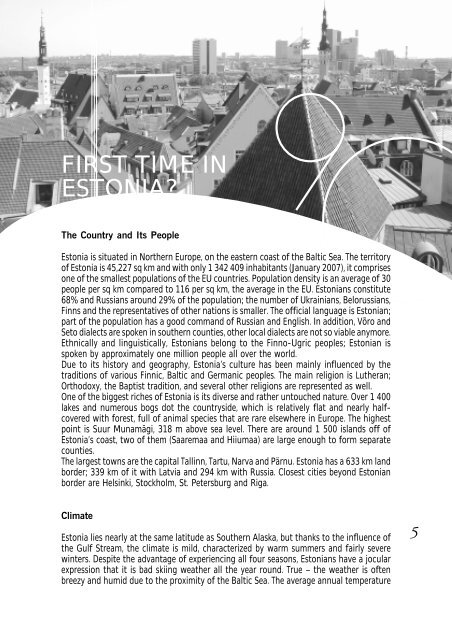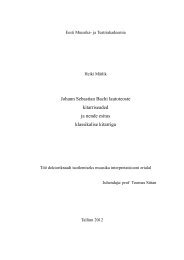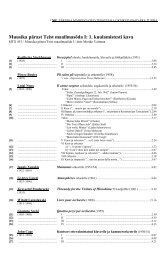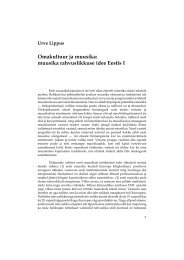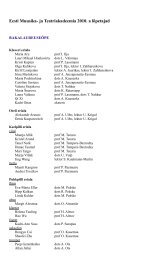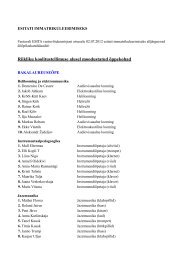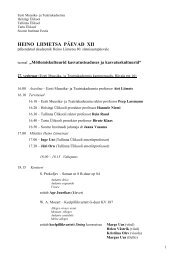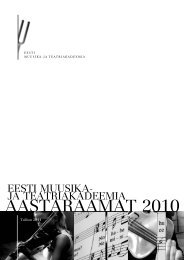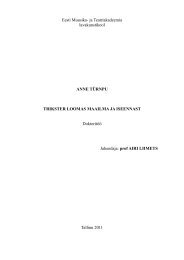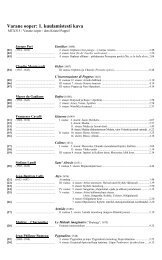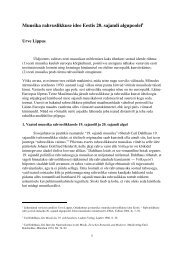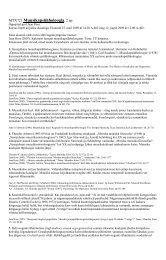You also want an ePaper? Increase the reach of your titles
YUMPU automatically turns print PDFs into web optimized ePapers that Google loves.
FIRST TIME IN<br />
ESTONIA<br />
The Country and Its People<br />
Estonia is situated in Northern Europe, on the eastern coast of the Baltic Sea. The territory<br />
of Estonia is 45,227 sq km and with only 1 342 409 inhabitants (January 2007), it comprises<br />
one of the smallest populations of the EU countries. Population density is an average of 30<br />
people per sq km compared to 116 per sq km, the average in the EU. Estonians constitute<br />
68% and Russians around 29% of the population; the number of Ukrainians, Belorussians,<br />
Finns and the representatives of other nations is smaller. The official language is Estonian;<br />
part of the population has a good command of Russian and English. In addition, Võro and<br />
Seto dialects are spoken in southern counties, other local dialects are not so viable anymore.<br />
Ethnically and linguistically, Estonians belong to the Finno-Ugric peoples; Estonian is<br />
spoken by approximately one million people all over the world.<br />
Due to its history and geography, Estonia’s culture has been mainly influenced by the<br />
traditions of various Finnic, Baltic and Germanic peoples. The main religion is Lutheran;<br />
Orthodoxy, the Baptist tradition, and several other religions are represented as well.<br />
One of the biggest riches of Estonia is its diverse and rather untouched nature. Over 1 400<br />
lakes and numerous bogs dot the countryside, which is relatively flat and nearly halfcovered<br />
with forest, full of animal species that are rare elsewhere in Europe. The highest<br />
point is Suur Munamägi, 318 m above sea level. There are around 1 500 islands off of<br />
Estonia’s coast, two of them (Saaremaa and Hiiumaa) are large enough to form separate<br />
counties.<br />
The largest towns are the capital Tallinn, Tartu, Narva and Pärnu. Estonia has a 633 km land<br />
border; 339 km of it with Latvia and 294 km with Russia. Closest cities beyond Estonian<br />
border are Helsinki, Stockholm, St. Petersburg and Riga.<br />
Climate<br />
Estonia lies nearly at the same latitude as Southern Alaska, but thanks to the influence of<br />
the Gulf Stream, the climate is mild, characterized by warm summers and fairly severe<br />
winters. Despite the advantage of experiencing all four seasons, Estonians have a jocular<br />
expression that it is bad skiing weather all the year round. True – the weather is often<br />
breezy and humid due to the proximity of the Baltic Sea. The average annual temperature<br />
5


